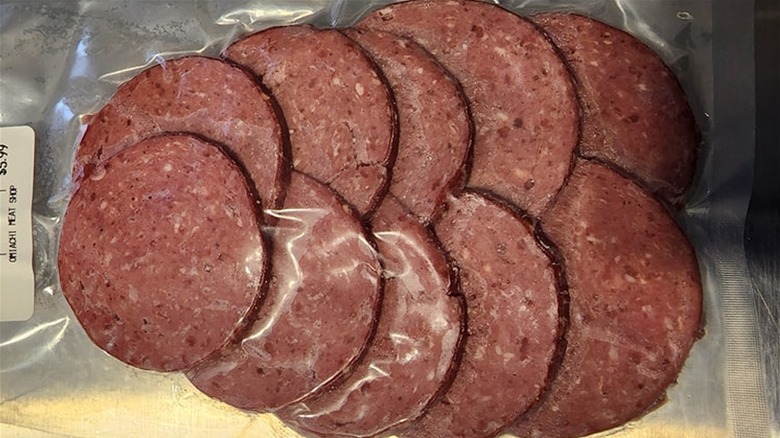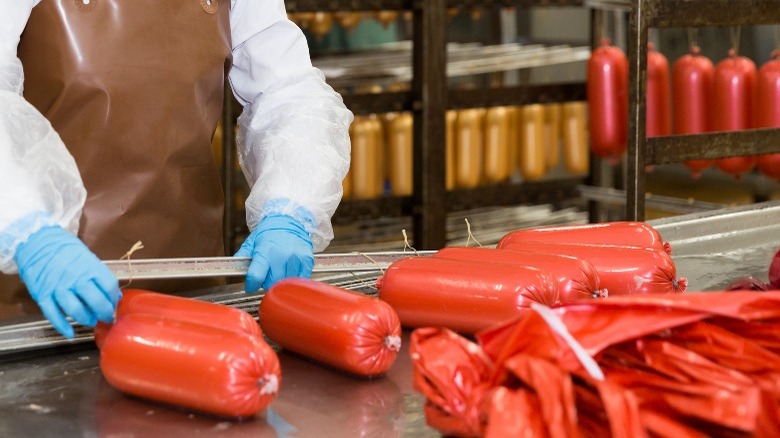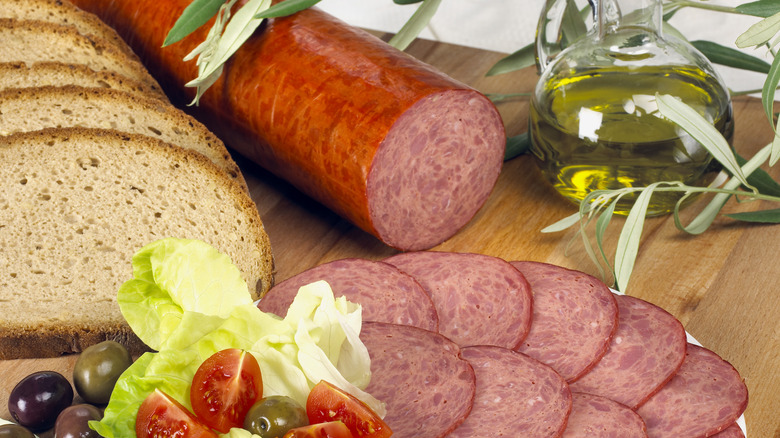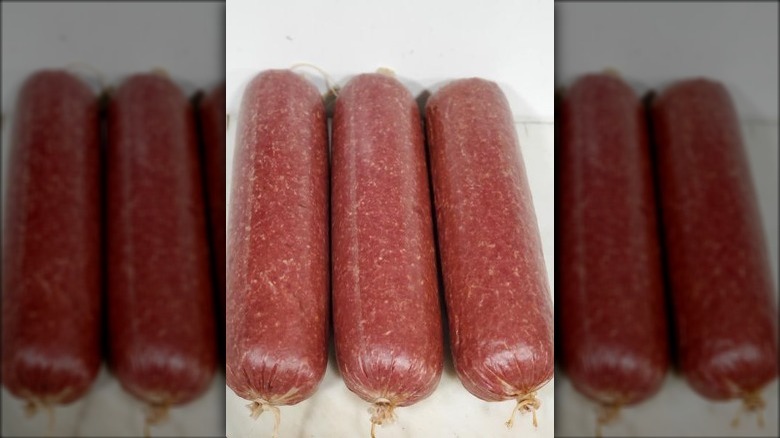Moose Bologna Is Newfoundland's Way Of Animal Population Control
We may receive a commission on purchases made from links.
The Canadian province of Newfoundland has –- or had, at any rate –- a problem that not too many of us may be familiar with here in the lower 48: an exploding moose population. Moose on the loose are no joke, as these sometimes 1400-pound antlered animals cause hundreds of car crashes every year, some of them fatal. Newfoundland's moose population does seem to be on the decline now, which is no surprise seeing as how just a few years ago the province was issuing nearly 30,000 moose hunting licenses per year and promising success rates of up to 85%. Even though some decry the moose massacring, including Redditors on the r/moose forum (yes, there is such a thing), even the moose themselves were not well served by their overpopulation problem, so reducing the numbers was necessary in order to ensure that the survivors had ample resources.
Still, 25,000 dead moose (which is approximately how many would be killed per year if the hunts were as successful as advertised) is a heaping helping of meat. So what was everybody doing with it? While moose steaks and stew are no doubt delicious, many hunters have opted to preserve some of it by turning it into processed meat products such as salami, pepperoni, and, as the title's already tipped you off, bushels and bushels of bologna.
How is moose bologna made?
Moose bologna, if commercially made, may be processed in a similar fashion to any other store-bought bologna. It would start with ground moose meat, which may or may not be blended with other types of meat, and would then be seasoned and mixed with water and fat. Preservatives such as nitrates, nitrites, and sodium erythorbate may be added, as well. The moose bologna is then stuffed into a casing (most likely with the aid of a machine of some sort unless it's being sold as artisanal) and is then cooked or possibly smoked. As a final step, it's possible that the moose bologna might be sliced prior to being packaged, or it could be sold as an entire log.
If you're going the homemade bologna route, you'll also start with ground meat (all moose or possibly with an admixture of pork) and add your own seasonings such as sugar, salt, onions, garlic, and liquid smoke. Roll it into logs, wrap it in plastic, and let it cure in the fridge for a day or two, then unwrap it and bake it low and slow in the oven for a few hours. Your finished bologna may look a little rustic sans casing, but Newfounders have been enjoying this simple style of homemade moose bologna for decades.
What does moose bologna taste like?
If you ask several different people who have all tried moose bologna to describe the flavor it's likely you'll get back a number of different reports (although tbh this is true of almost any type of food). Some describe it as being rather intense and having a strong gamey flavor, albeit one that can be offset by the choice of seasonings used in the bologna or by mixing the moose meat with another kind of ground meat. Others, however, find bologna made with moose to taste somewhat similar to bologna made with beef.
The difference, it seems, may not lie entirely within people's differing perceptions, but a particular moose's sex, age, and what it may have been eating. A moose can wander over a territory of up to 50 square miles, which makes for diverse foraging opportunities. Should your moose have been dining upon tree bark, its meat will no doubt taste quite a bit different than if it had consumed leaves or flowers instead. As moose farming is not yet a thing, you're pretty much taking a potluck with the meat used in your moose bologna. But for connoisseurs of the stuff, who's to say that isn't all part of the fun?
How to eat moose bologna
Moose bologna can be eaten much the same way as any other kind of bologna – between slices of spongy white bread smothered with mayonnaise if that's what floats your boat. You could also fry it for breakfast in true Newfoundland style or make it into a full Canadian breakfast with the addition of toast, eggs, and pancakes (possibly the Newfoundland specialty known as toutons). Moose bologna can also be used to make a donair, a Canadian sandwich with a sauce whose secret ingredient is sweetened condensed milk.
Heartier options for making the most of your moose bologna include a traditional Newfoundland dish called bologna stew which is made with chunks of the meat as well as vegetables and that favorite Canadian condiment, ketchup. Should you wish to venture even further afield, one creative Newfoundlander even authored "The Bologna Cookbook" which features 200 different recipes ranging from bologna stroganoff to bologna steaks in a balsamic peppercorn sauce.
Where can you buy moose bologna?
Up until fairly recently, you could not purchase moose bologna in a store, nor moose meat of any kind. The only way to possess the stuff legally was to either kill your own moose (with the appropriate hunting license, of course, and doing so within the designated season) or to be gifted some by a hunter. As for the bologna, you'd most likely need to make it yourself or receive it from another home cook who had done so.
These days, however, some hunters are able to obtain special permits allowing them to sell moose meat to commercial processors so moose meat is something that can be purchased in grocery stores such as Newfoundland's own Bidgood's. A boutique business called Wild Side Meats, once profiled by Anthony Bourdain, produced its own moose bologna. But sadly seems to be out of business now. The Omiachi Meat Shop, also in Newfoundland, has been known to make moose bologna for customers who bring in their own moose meat. If you're outside of Newfoundland, though, you may be out of luck as moose bologna does not seem to be available for export.




